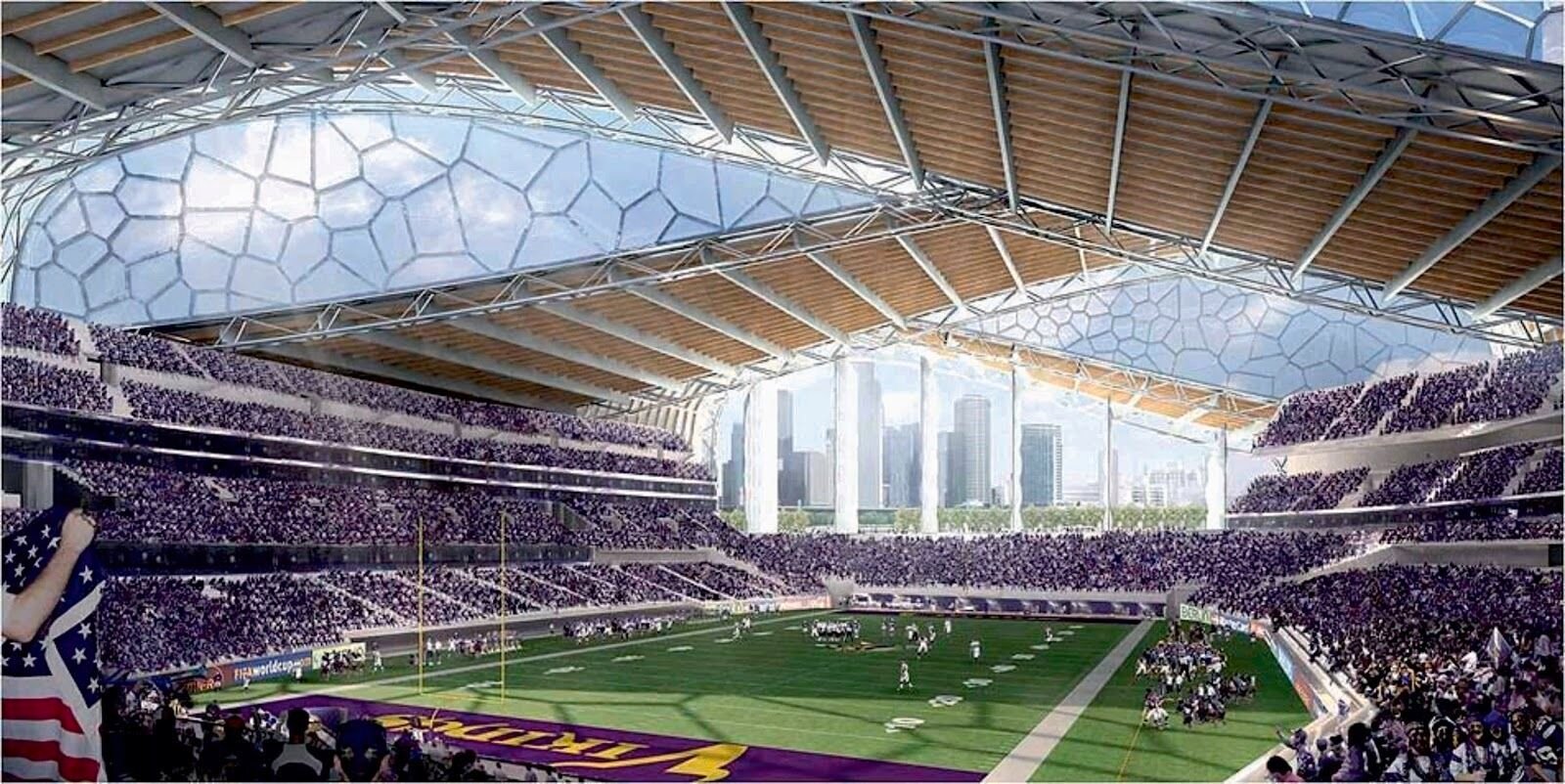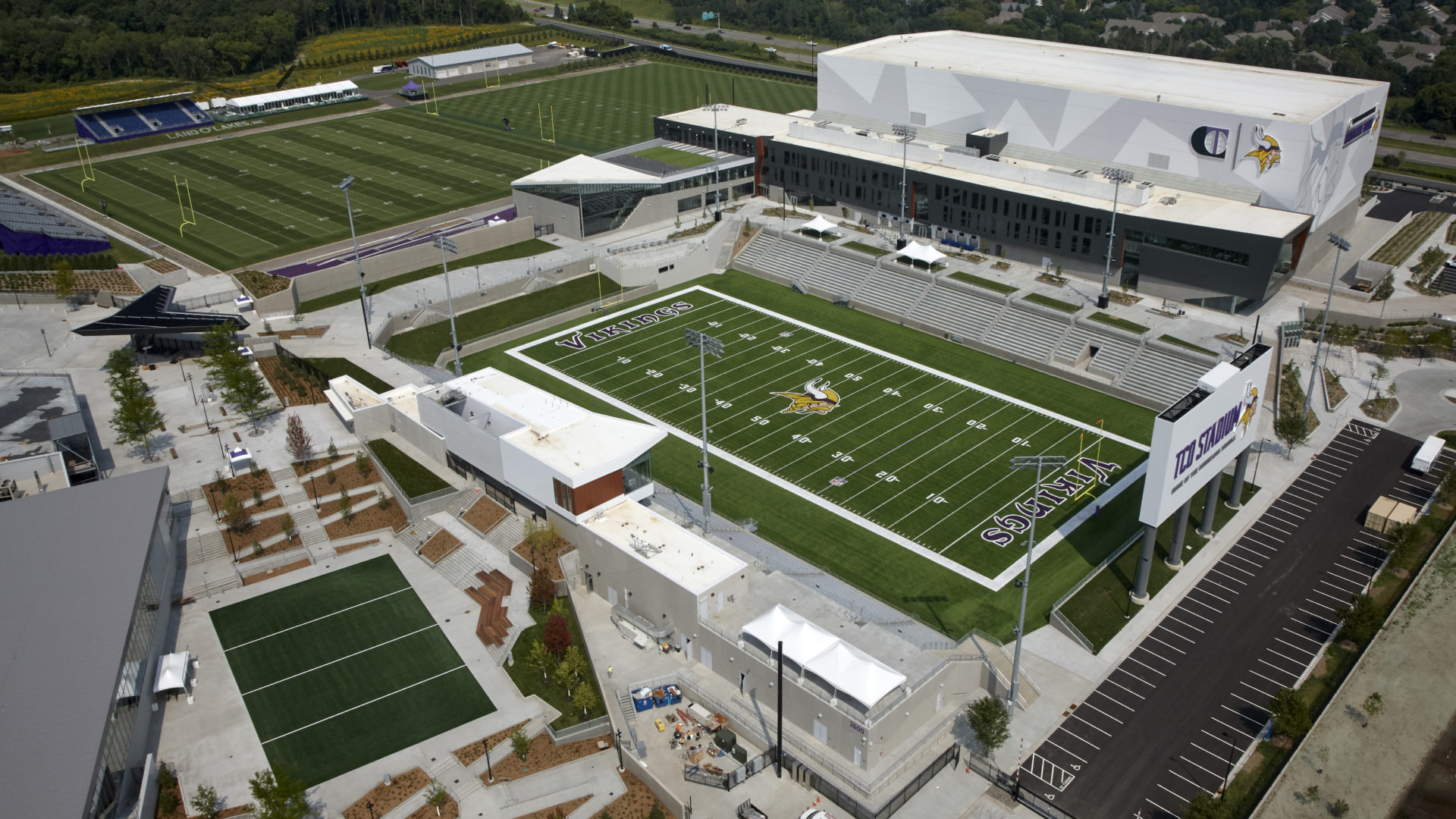
Scale and site are the two principle elements with regards to “connectivity”, the Vikings wouldn’t have been interested in a 30,000 seat stadium, and the visionaries in mpls (Star Tribune Editorial Board/Really rich people from Lake Mtka) wouldn’t consider another site. We have 30 years of evidence as to what effect this stadium will have on the neighborhood, those espousing the “connectivity” that will come from better design are searching for something that can’t happen. Why it was SO important for the mpls booster’s to have to keep the football team in dwtn is beyond me. Now Dwtn East is no Mid-Town, not from an economic perspective or from a urban context perspective, but the fact will remain the same- football stadiums are out-scaled, anti-urban mega-structures. Why? It would’ve been a terrible land-use decision- studies confirmed it would lower the tax base of the area and create an absolute barrier in the urban fabric. This fantasy lasted about two months until there were literally no defenders left for a Manhattan football stadium. I happened to be living in NYC studying architecture and planning when the idea was thrown out to build the NY Jets a 2 billion dollar palace in Mid-Town West ( near Madison Square Garden and Penn Station). I doubt any design would alleviate the anti-urban nature of football stadiums. Now, with e-pulltabs being as they are, all we need to do now is find a way to pay for itself ( and, if you don’t care for it, well – if history repeats itself, it’ll likely be torn down in about 20 years). It’ll be empty 95% of the time and chaotic the other 5%. Who would want to live by a monolithic, mega church of a building that only occasionally pays homage to the cultural Gods of Football. There really isn’t much here that will act as an improvement in the urban design department, and it is hard to see how a building like this will promote additional development. This is unacceptable – a 5 to 6 story blank wall? No windows. It’s blank, dark and ignores the urban environment. No activity here except a parking lot and some emergency exit doors. This will arguably be the worst part of the stadium. It’s a large, nondescript plaza that pays homage to the stadiums large set of windows, and not to the surrounding environment. The large plaza will be lively during the football season, but will likely be a wind-swept space during regular 9 to 5 Monday-Saturday.

It’s basically a new, modern rendition of the Metrodome: an over-sized, unquestionably ugly spaceship that adds nothing to the built environment. There are no new improved transportation connections between the Downtown East neighborhood and the rest of downtown or the River. But, what’s a green space with an active surrounding? The park like space will likely be empty without adjacent buildings nearby to add activity. It’s a large building that adds a small park to the Metrodome’s existing footprint. This will likely be an impressive sight from inside the new stadium, but it won’t do much for pedestrian activity or promoting a lively streetscape during non-game days. Urban design is very important, and for this reason, I ask the City of Minneapolis Council to consider that upon their approval of the site plan.Īlong the plaza, facing the current Metrodome light rail station, a large plaza opens up to large glass walls.


The urban design isn’t shaping out to be an improvement over the current footprint of the Metrodome.

The architecture and urban design of the new Vikings stadium are bad, at best. Going into tonight, I had my fingers crossed that we’d get something similar to Indianapolis. It doesn’t always have the best street frontage, but it still pretends the pedestrian exists. It’s a large, expensive taxpayer subsidizes stadium, but it does pay homage to classical architecture. This proposal fails on both fronts.įor all it’s faults, the City of Indianapolis built Lucas Oil Stadium. That means we need a combination of respectful architecture and urban design.
MINNESOTA STADIUM DESIGN PROFESSIONAL
I’ve been a critic of professional sports financing for a long time and will continue to be but now that it’s a reality that the Vikings will get a new home, I’d like to see it be as good as possible. However, be this as it may, preference on architectural styling, no one should be surprised as this is the usual forgettable stuff that post-modernist firms like HKS Architects have been creating for quite some time. Personally, I think it looks like a cross between a laser jet printer, a drunk Frank Gehry and something out of 2001: A Space Odyssey. The architecture of the Minnesota Vikings Stadium: take it or leave it?


 0 kommentar(er)
0 kommentar(er)
